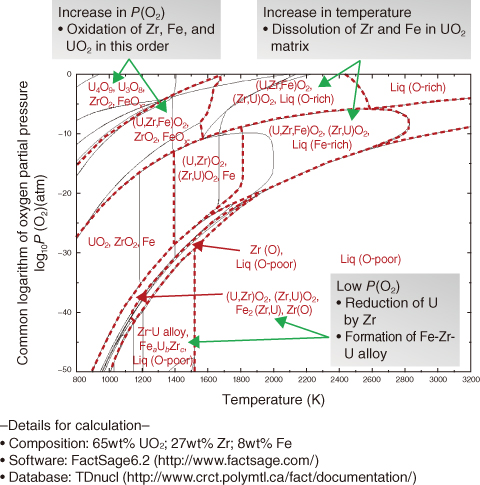
Fig.1-32 Calculated phase diagram of temperature vs. oxygen partial pressure (P (O2)) for the UO2-Zr-Fe system

Fig.1-33 Chemical form estimation for in-vessel fuel debris after core degradation
To prepare for the removal of fuel debris at the TEPCO’s Fukushima Daiichi NPS (1F), data on the physical properties of fuel debris are necessary. However, the actual situation inside the damaged core of 1F is hardly known. In this study, the chemical forms of fuel debris were estimated through thermodynamic calculation.
As a preliminary evaluation, the effects of temperature and oxygen partial pressure (P (O2) on the chemical forms of the fuel debris were investigated under constant composition of the core materials (UO2, Zr, and Fe). As shown in Fig.1-32, at low P (O2), the metal Zr tends to react with UO2 and Fe. With an increase in P (O2), the core materials are oxidized in the order Zr, Fe, and UO2. Metallic phases, such as Zr(O) and Fe2(Zr,U), are expected to be formed as long as Zr is not fully oxidized. In addition, an increase in temperature is expected to cause the formation of mixed oxides, such as (U,Zr)O2, and (U,Zr,Fe)O2.
The composition of the core materials in the RPV after core degradation was evaluated from the results of the melt progression analysis conducted by Ishikawa et al (2012 Fall Meeting of the Atomic Energy Society of Japan). Based on this information, a thermodynamic calculation was conducted. Fig.1-33 shows the results of chemical form estimation for 1F Unit 2 (1F2). The middle part of the core region was occupied by mixed oxides, such as (U,Zr)O2, while the lower part near the core plate was rich in metal phases, such as Zr(O) and Fe2(Zr,U). This trend is consistent with the result of the preliminary evaluation described above. However, if the RPV is severely damaged, the concrete from the pressure containment vessel floor also needs to be considered.
We are accumulating data on mechanical properties such as the hardnesses and fracture toughnesses of the typical phases of fuel debris, including metal phases. Those data will contribute to the appropriate selection of defueling methods and tools.